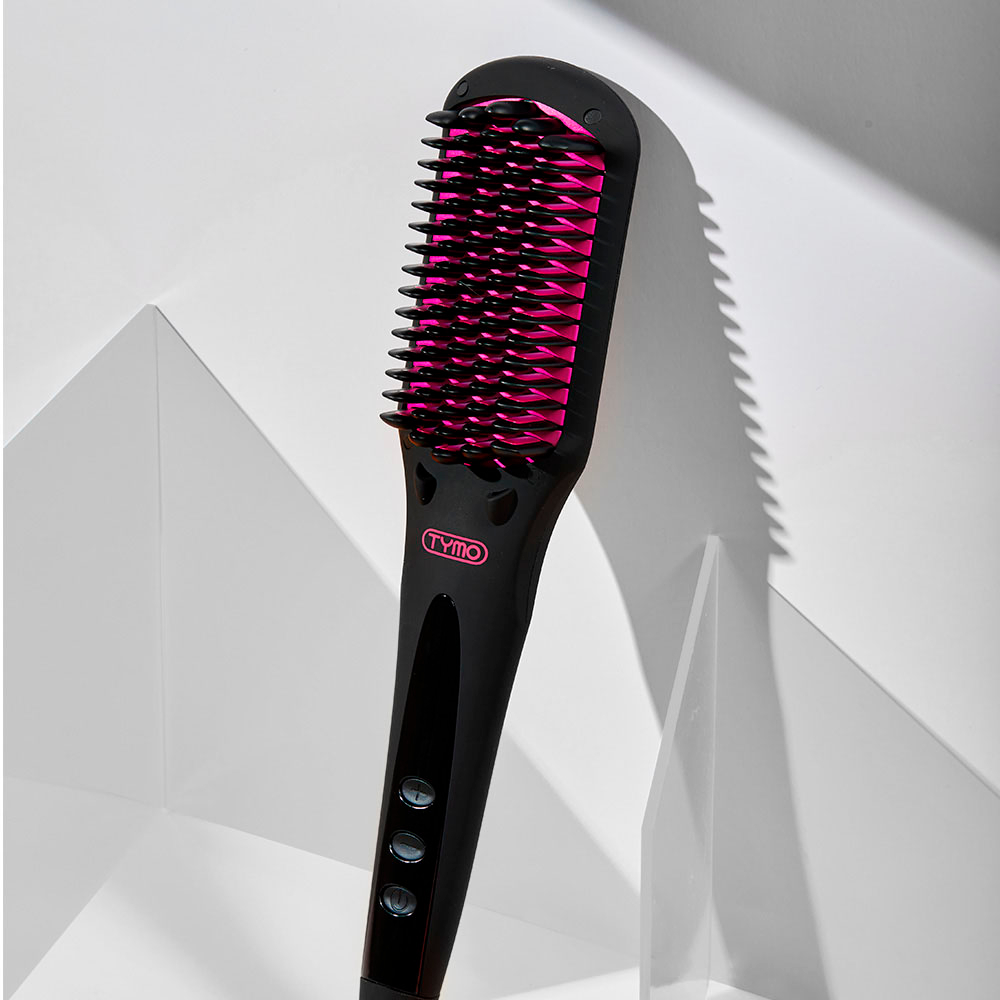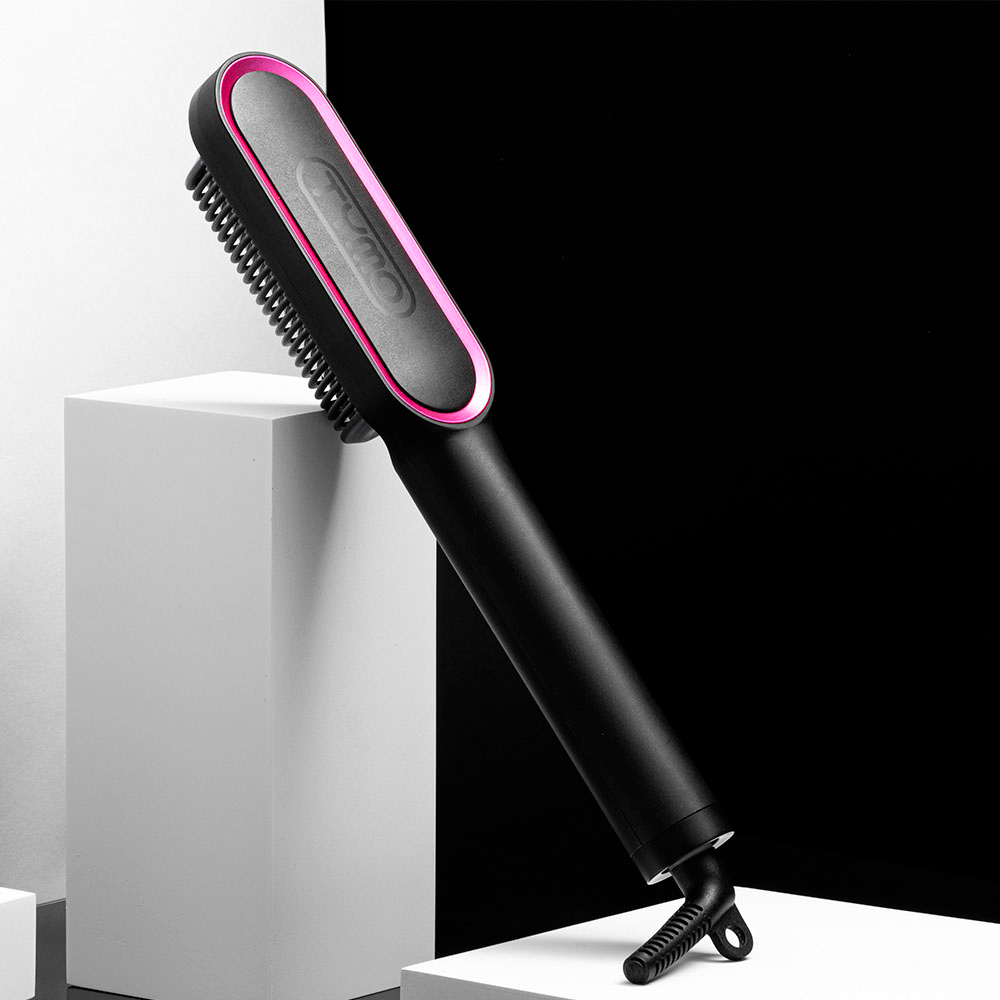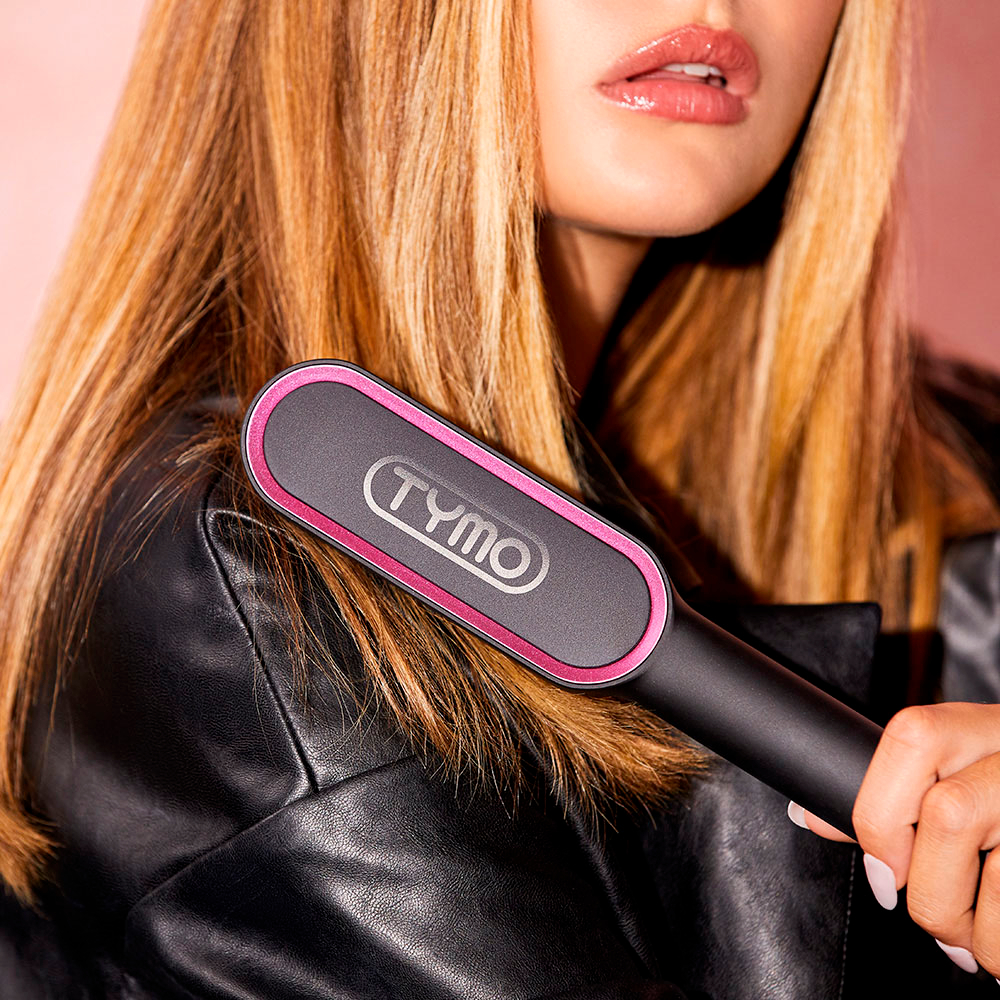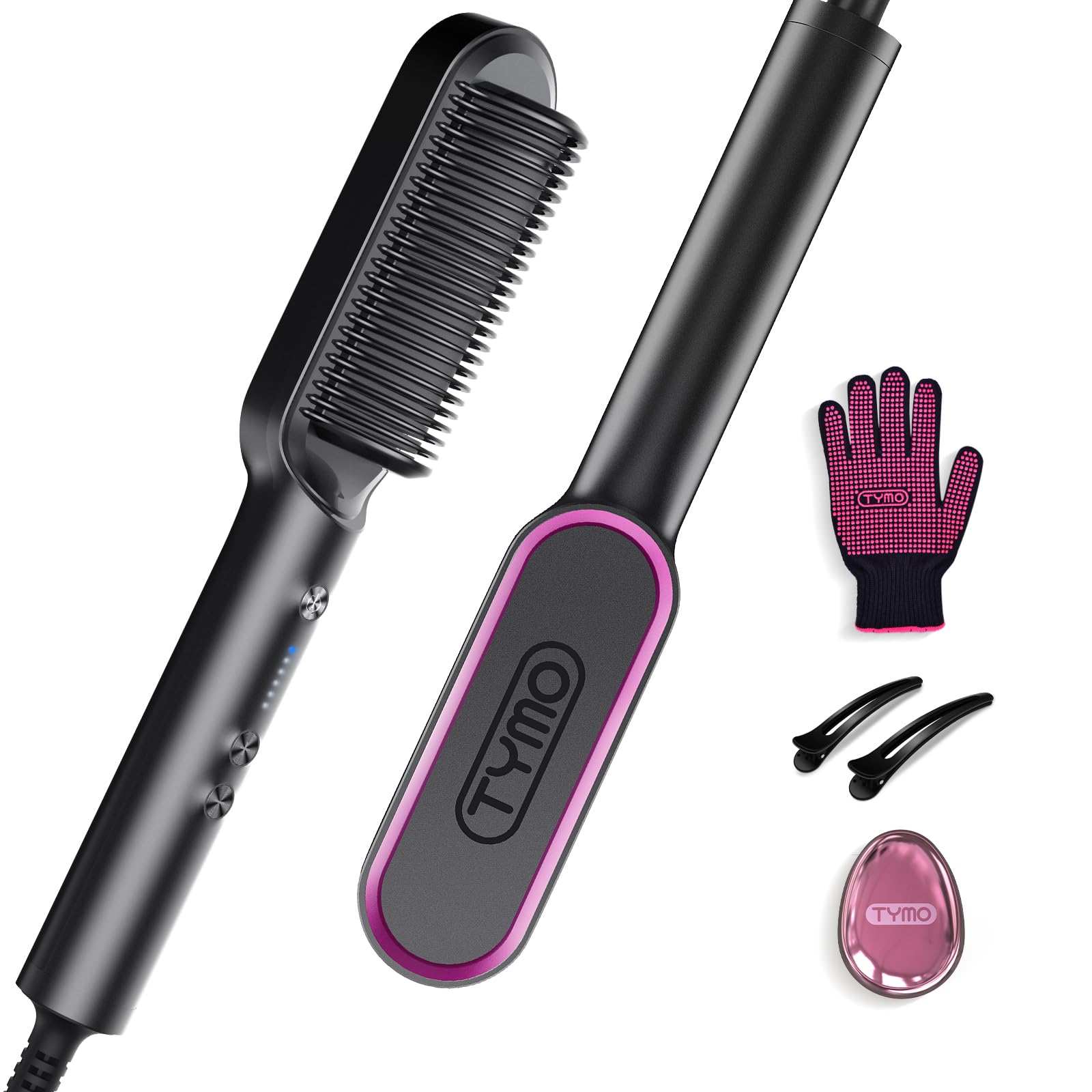Introduction:
how to clean tymo straightening brush of 2024
Cleaning your TYMO straightening brush regularly is essential to maintain its performance and longevity. Hair products, oils, and dirt can accumulate on the brush over time, affecting its efficiency and potentially damaging your hair. This comprehensive guide explores the best practices fo rhow to clean tymo straightening brush, ensuring it remains in top condition for longer.
How to Clean a TYMO Straightening Brush:
Ensuring Optimal Performance and Longevity
Understanding the TYMO Straightening Brush:
What Are Its Key Features?
Before diving into the cleaning process, it’s helpful to understand the structure and key features of the TYMO straightening brush.
Design Elements: The TYMO straightening brush combines a traditional hairbrush with advanced straightening technology. It features ceramic heating plates that provide consistent heat distribution, ensuring smooth, straight hair. The brush’s bristles are designed to detangle hair while applying heat.
Heat Settings: The TYMO straightening brush typically comes with adjustable heat settings, allowing you to choose the optimal temperature for your hair type. Consistent heating ensures efficient styling without causing damage.
Safety Features: Safety features often include automatic shut-off, anti-scald technology, and heat-resistant materials. These elements enhance user safety and make the brush more convenient to use.
Regular Cleaning:
Why Is It Important for Your TYMO Straightening Brush?
Regularly cleaning your TYMO straightening brush is crucial for several reasons.
Performance: Accumulated hair product residue, oils, and dirt can affect the brush’s heating efficiency and performance. Regular cleaning ensures the brush heats evenly and styles your hair effectively.
Hygiene: A clean brush is essential for maintaining hair hygiene. Residue from hair products can attract dust and bacteria, potentially leading to scalp irritation and other hygiene issues.
Longevity: Proper maintenance and cleaning extend the life of your TYMO straightening brush. Removing residue and buildup prevents damage to the heating elements and bristles, ensuring the brush continues to function effectively for years.
Preparation:
How to Get Ready for Cleaning Your TYMO Straightening Brush?
Before starting the cleaning process, preparation is key to ensure effective and safe cleaning.
Unplug the Brush: Ensure the TYMO straightening brush is unplugged and completely cool before you start cleaning. This prevents any risk of burns or electrical shocks.
Gather Supplies: Collect the necessary cleaning supplies, including a soft cloth, a small brush or toothbrush, rubbing alcohol or mild soap, and cotton swabs. These tools help you clean the brush thoroughly without causing damage.
Disassemble if Possible: If your TYMO brush allows for any disassembly, such as removing the detachable bristle pad, do so carefully. Refer to the manufacturer’s instructions for guidance. Disassembling makes it easier to reach and clean all parts of the brush.
Cleaning Process:
How to Clean Your TYMO Straightening Brush Step-by-Step?
Following a systematic cleaning process ensures that all parts of the TYMO straightening brush are effectively cleaned.
Remove Hair and Debris:
Step 1: Using your fingers or a comb, remove any visible hair strands tangled in the bristles. Be gentle to avoid pulling or damaging the bristles.
Step 2: Use a small brush or toothbrush to remove any smaller particles or debris. Brush between the bristles to ensure all hair and dirt are removed.
Clean the Bristles and Plates:
Step 1: Dampen a soft cloth with rubbing alcohol or a mixture of mild soap and water. Avoid soaking the cloth to prevent water from entering the brush’s electrical components.
Step 2: Gently wipe the bristles and ceramic plates with the damp cloth, focusing on areas with visible residue. The rubbing alcohol helps dissolve product build-up and disinfects the surface.
Step 3: Use cotton swabs dipped in rubbing alcohol to clean between the bristles and around the heating plates. This step ensures that any remaining dirt or oil is removed from hard-to-reach areas.
Clean the Handle and Exterior:
Step 1: Wipe the handle and exterior of the brush with a damp cloth. Pay attention to any buttons or controls, ensuring they are free from residue or dirt.
Step 2: Dry the handle and exterior with a dry cloth to prevent any moisture from seeping into the brush’s electronics.
Final Checks and Reassembly:
Step 1: Inspect the brush to ensure all areas have been cleaned thoroughly. Look for any remaining residue, and repeat the cleaning steps if necessary.
Step 2: If you disassembled any parts, reassemble them carefully, ensuring they are securely attached.
Step 3: Allow the brush to air dry completely before plugging it in for use. Ensuring the brush is dry prevents any risk of electrical issues.
 Maintaining the TYMO Straightening Brush:
Maintaining the TYMO Straightening Brush:
How to Keep It in Good Condition?
Ongoing maintenance keeps your TYMO straightening brush in optimal condition and enhances its performance.
Regular Cleaning: Incorporate a regular cleaning routine, cleaning the brush every few weeks or after several uses, depending on how frequently you use it. Regular cleaning prevents heavy build-up and makes the process quicker and easier.
Proper Storage: Store your TYMO straightening brush in a dry, cool place. Avoid leaving it in humid environments like bathrooms, as moisture can damage the electrical components and promote mold growth.
Use Heat Protectant: Applying a heat protectant to your hair before using the brush reduces residue build-up on the bristles and ceramic plates. Heat protectants also help preserve your hair’s health, preventing damage from high temperatures.
Avoid Overloading the Brush: Do not overload the brush with too much hair at once. Working in small sections ensures effective styling and reduces strain on the bristles and heating elements.
Handle with Care: Handle the brush gently, especially when detangling hair. Rough handling can damage the bristles and negatively impact the brush’s performance.
Professional Tips:
How to clean tymo straightening brush
What Do Hair Care Experts Recommend?
Gaining insights from hair care professionals can enhance your cleaning and maintenance routine.
Consistent Cleaning: Professionals emphasize the importance of consistent cleaning to maintain the efficiency and lifespan of the brush. Regular maintenance prevents issues and ensures optimal performance.
Use the Right Products: Experts recommend using the appropriate cleaning products, such as rubbing alcohol or mild soap, to dissolve build-up effectively without damaging the brush’s materials.
Avoid Submersion: Never submerge the straightening brush in water. Moisture can damage the electrical components, leading to malfunctions and potential hazards. Stick to damp cloths and targeted cleaning.
Check Manufacturer Guidelines: Always refer to the manufacturer’s guidelines for cleaning and maintenance. Following these recommendations ensures you do not void the warranty or cause unintended damage.
Additional Tips:
How to Enhance the Cleaning Process?
Incorporating a few additional tips can further improve the cleaning and maintenance of your TYMO straightening brush.
Heat Residual Cleaning: After using the brush, allow it to cool slightly before cleaning. The residual heat can help loosen build-up, making it easier to remove with a damp cloth.
Deep Cleaning Routine: Consider a deep cleaning routine every few months, involving more detailed cleaning and inspection of the brush. This practice helps catch any potential issues early and ensures thorough maintenance.
Avoid Harsh Chemicals: Steer clear of harsh chemicals or abrasive cleaning tools that can damage the bristles or ceramic plates. Stick to mild cleaning agents and soft materials for safe and effective cleaning.
Check for Wear and Tear: Regularly inspect the brush for any signs of wear and tear, such as damaged bristles or loose components. Addressing these issues promptly ensures continued performance and safety.
Store Properly: When not in use, store the brush in its original packaging or a protective case. This practice prevents dust accumulation and protects the brush from potential damage.
Some popular trends in the straightening brush industry:
The straightening brush, also known as a straightening comb or hot brush, has gained popularity in recent years due to its convenience and functionality. Here are some popular trends in the straightening brush industry:
Ceramic or Tourmaline Technology:
Straightening brushes with ceramic or tourmaline-coated bristles are favored as they help distribute heat evenly, reduce frizz, and minimize hair damage. These materials also provide a smooth glide through the hair for effective straightening.
Adjustable Temperature Settings:
Straightening brushes with adjustable temperature settings are popular to accommodate different hair types and textures. Users can select a temperature suitable for their hair, whether fine and sensitive or thick and coarse, to achieve the desired results without excessive heat exposure.
Quick Heating Time:
Straightening brushes with fast heating times have become more popular as users look for efficient styling tools. Manufacturers are incorporating advanced heating technologies, allowing the brush to reach the desired temperature quickly, sometimes within seconds.
Negative Ion Technology:
Straightening brushes with negative ion technology produce negative ions that help neutralize positive ions in the hair. This reduces static electricity, smoothens the hair cuticles, and enhances the overall shine and manageability of the hair.
Safety Features:
Straightening brushes are incorporating safety features such as automatic shut-off mechanisms to prevent overheating and potential accidents. This provides peace of mind to users and enhances the overall safety of the device.
Anti-Scald Design:
Many straightening brushes are designed with heat-resistant bristles or protective plates that prevent direct contact between the hot surface and the scalp, reducing the risk of burns or discomfort during styling.
User-friendly Features:
Straightening brushes are becoming more user-friendly with features such as LCD displays, ergonomic designs, swivel cords for tangle-free use, and lightweight construction for comfortable handling.
Travel-friendly Designs:
Straightening brushes designed for travel are gaining popularity. These brushes may have a compact size, dual voltage capabilities for worldwide use, and heat-resistant pouches or bags for easy storage and transportation.
It’s worth noting that trends can vary, and new advancements often emerge in the industry. It’s advisable to research and read reviews from reputable sources to stay updated on the latest trends and options available when choosing a straightening brush.
Conclusion
How to clean my tymo straightening comb
Regular cleaning and proper maintenance of your TYMO straightening brush are essential for maintaining its performance, hygiene, and longevity. Understanding the structure and features of the brush helps you identify the best cleaning methods. Following a systematic cleaning process, including removing hair and debris, cleaning the bristles and plates, and ensuring the brush is completely dry, keeps it in optimal condition. Ongoing maintenance, proper storage, and handling with care further enhance the brush’s performance. Learning from professional tips, user experiences, and incorporating additional cleaning enhancements ensure that your TYMO straightening brush remains effective, safe, and enjoyable to use for years to come.




